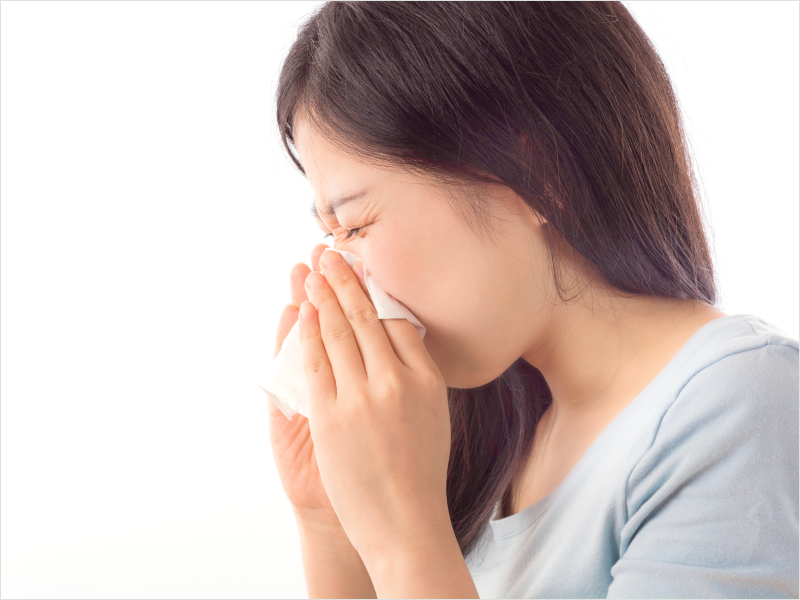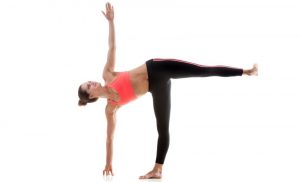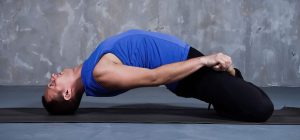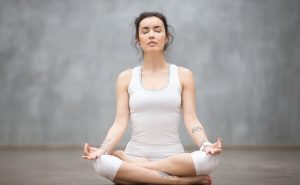
ALLERGIC RHINITIS – YOGA ASANAS
- January 4, 2023
- Posted by Dr. Vaidya Karanvir Singh
- 0 Comment(s)
Yoga provide safe and natural solution to numerous health conditions. It helps to improve flexibility, energy, balance and reduce the level of stress in the body.
Yoga asana work on improving breathing and also boost body immunity against allergies. Regular practice of asana helps to enhance the respiratory flow through nasal cavity. Focusing on breathing pattern while performing asana reduce stress and also lowers the amount of histamine in body thus helps to reduce symptoms of allergy.
WHAT IS ALLERGIC RHINITIS ?
It is an allergic response of immune system to exposure of certain allergens like pollens, mites etc. It is long standing conditions which often goes undetected . It is a common condition which make person feel awful but can be relieved with lifestyle changes and right treatment.
It is also called as Hay fever. It has cold like symptoms so in some case it is confused with common cold or flu.
WHAT ARE THE TYPES OF ALLERGIC RHINITIS ?
There are mainly two types :
- Seasonal Allergic Rhinitis : It most commonly occur in summer, fall and spring due to pollens and molds in the air. Symptoms of seasonal allergic rhinitis usually improve with the change in weather.
- Perennial Allergic Rhinitis : It occur throughout the year as the symptoms are caused by indoor allergens
Table of Contents
WHAT ARE THE CAUSES OF ALLERGIIC RHINITIS ?
It happens due to oversensitivity of immune system to certain allergens . Allergens are tiny partials that are ease to inhale through nose or mouth.
Allergens are harmless to most of the peoples. But in certain individuals due to hypersensitivity of immune system , it release a natural chemical named Histamine in the blood stream to fight of the allergen. Histamine cause inflammation of mucus membrane of nose, Throat and eyes as they work to eject allergen from the body.
Some common and perennial allergens are :
- Pollens :
- Grass pollen like blue grass
- Tree pollens like birch, maple alder
- Weed pollens
- Molds of cladosporium etc
- Insects waste and saliva like houseflies, cockroaches , bed bugs, fleas.
- Pet dander of animals like dogs, rabbits, cats atc
- Dust mites
- Ingestants like fish, eggs, nuts , milk etc.
WHAT ARE THE RISK FACTORS ?
- Family history : Having family history of allergy may increase the risk of Allergic rhinitis
- Certain conditions : Some conditions like asthma and eczema can increase the risk of allergic rhinitis
- Genetic susceptibility
- High total of Serum IgE
- Obesity
- Exposure to pollutants
- Humidity and cold weather
- Excessive inhalation of nitric oxide.
WHAT ARE THE SYMPTOMS OF ALLERGIC RHINITIS ?
Some of the common symptoms of Allergic Rhinitis are :
- Nasal congestion or runny nose
- Itching of mouth, nose or eyes
- Frequent sneezing
- Mouth breathing
- Puffy eyelids
- Watery, red, itchy eyes
- Coughing
- Sore throat
- Headache
- Dark circles under the eyes
- Popping or crackling of ears
- Some loss of smell
- Poor concentration
- Fatigue
- Malaise
COMPICATIONS OF ALLERGIC RHINITIS :
- Sinusitis
- Middle ear infection
- Nasal polyps
- Sleep apnea
- Eustachian tube dysfunction
- Upper respiratory tract infection
AYURVEDIC APPROACH :
It can be correlated with Vata-kaphaja pratishaya. Due to nidan sevan the Kapha dosha along with vata hampers the digestive fire which leads to the formation of ama in the body. Ama affects the rasa and rakta dhatu which leads to manifestation of pratishyaya.
HERBS :
- Turmeric
- Ashwagandha
- Amla
- Tulsi
- Dry Ginger
YOGA ASANAS :
- ARDHA CHANDR ASANA ( HALF MOON POSE ) : It helps to strengthen the spine and relieve backache. It helps to open up your chest and shoulders thus provide relief to some symptoms of allergic rhinitis. It also helps to relieve stress and enhance body coordination.
STEPS :
- Stand in tree pose with right leg forward and softly bend your knee while bringing left hand to the hip.
- Slowly place right hand on floor in front of right leg. Tent your hand so only fingertips touches the ground.
- Straight your right leg along with lifting the left foot off the floor. Keep left foot as straight as possible.
- Open your hips so that left hip point assembled on right hip point.
- Left leg will be parallel to ground and flex foot so toes point toward the left.
- Raise left arm up with opening the chest to make straight line with right leg and left hand.
- Turn the head to see the fingertip’s of left hand .
- Hold the posture for 4-5 breaths and return to standing posture
- Repeat the pose on other side.
PRECAUSTIONS :
- Leg, shoulder or hip injury
- Low blood pressure
- Pregnancy
- Ligament tear of knee, wrist or ankle
- Diarrhea
- Slipped disc.
- MATSYASANA ( FISH POSE ) : It helps to stretch the neck and chest. It also relieves the tension from neck and shoulder. It encourages the deep breathing thus provide relief from respiratory disorders.
STEPS :
- Lie down on your back and keep your feet together.
- Now place hands on floor with palms facing downward. Slowly start moving hands beneath thighs closer to buttocks
- Keep forearms firmly on ground while slowly lifting your chest up by putting weight on your elbows.
- Lower the head back until it touches the ground and elbow bearing the whole weight not head.
- Take even breaths as your body is now an arch.
- Hold the posture for few minutes and then gradually return to resting position.
PRECAUTIONS :
- Migraine
- High or low blood pressure
- Lower back or neck injury
- Insomnia
- Severe arthritis
- Hernia
- KAPALBHATI :It is a breathing technique that helps to clear the sinus as well as improve brain functions. It clears blockage in respiratory system and treats cold and cough.
STEPS :
- Sit down on floor with crossed legs keeping feet on thighs across from one another
- Place hands in mudra position
- Slowly take a deep breath
- While exhaling pull the navel back towards spine so you feel contraction of abdominal muscles
- When you relax the navel and abdomen breath will automatically flows into the lungs.
- Do this for 2 minutes and than relax with eyes closed .
PRECAUTIONS :
- Epilepsy
- Vertigo
- History of stroke
- Heart disease
- Migraine
- Recent abdominal surgery
- Hernia
- USTRASANA (CAMEL POSE ) : It helps to removes stuffiness in nasal passage and also helps to improve eyesight and digestion.
STEPS :
- Kneel on mat with hands placed on hips .
- Stand on your knees while keeping thighs fully stretched.
- Slowly start leaning in backward direction making an arch with your back.
- Reach the right heel with right hand and left heel with left hand to provide support keeping both arms straight.
- Hold the pose for couple of breaths and then gradually return to initial position.
PRECAUTIONS :
- Anxiety
- Postnatal women
- Acute back pain
- Pregnancy
- Vertigo
Advanced spondylitis

Dr. Vaidya Karanvir Singh is the younger Vaidya in Chandigarh Ayurved & Panchakarma Centre. He is the fourth generation in his family who is practicing as a general consultant in Ayurved & Panchakarma treatment at Chandigarh. In his practice, he had treated more than 1 Lakh Plus patients worldwide.




